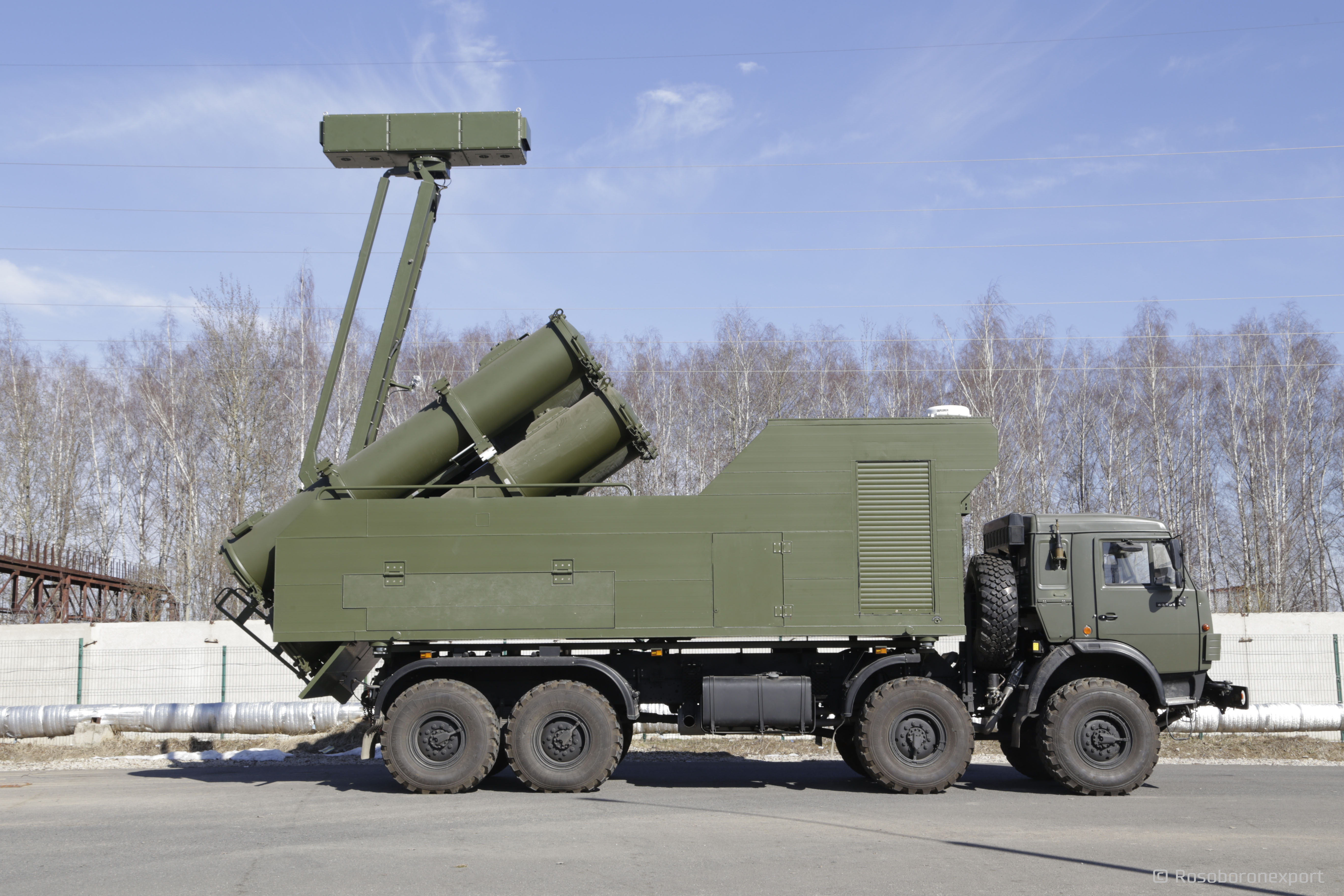Russia will showcase the latest Rubezh-ME coastal defense system at the upcoming International Defence Exhibition (IDEX) 2023 in the United Arab Emirates, the press office of the state arms seller Rosoboronexport announced on February 16.
“In the exhibition’s naval segment, Rosoboronexport will demonstrate the BK-10 high-speed assault boat, the BK-16 high-speed amphibious assault boat and the Rubezh-ME tactical coastal defense missile system,” the press office said in a statement.
The Rubezh-ME is a tactical coastal defense system that is based on the KamAZ-6350 8×8 military truck chassis and armed with Kh-35UE missiles.
The Kh-35UE is the latest export version of the Kh-35 subsonic cruise missile, which was developed by Russia’s Tactical Missiles Corporation. The anti-ship missile has a secondary land-attack capability.
The cruise missile navigates towards its target using a GLONASS-aided inertial navigation system. For terminal guidance, the missile is equipped with an active radar seeker. The missile has a maximum range of 260 kilometers with a speed of no more than Mach 0.85. It can fly as low as four meters before hitting its target.
Each Rubezh-ME launch vehicle can carry four containerized Kh-35UE missiles. The vehicle is also equipped with either the Mineral-ME1 active radar with detection range of 250 kilometers or Mineral-ME2 passive radar with detection range of 750 kilometers. Each of these radars can detect up to 200 naval targets simultaneously.
The launch vehicle is operated by a crew of just two, including commander and driver. There is an NBC [nuclear, biological and chemical] protection system provided for the crew.
A typical battery of the Rubezh-ME includes up to eight launcher vehicles with missiles and a mobile command post, equipped with Monolit-B passive\active radar that has a range of up to 450 kilometers. It is based on the same KamAZ military truck chassis. Each launcher vehicle is supported by an associated reloading vehicle, which is fitted with a crane and carries reload missiles.
The Rubezh-ME is a more compact, maneuverable version of the Bal-E system, which is also armed with Kh-35-series missiles.
IDEX-2023 expo will be held in UAE capital Abu Dhabi between February 20 and 24. The joint Russian exposition at the event will be located in a separate pavilion, where Rosoboronexport and enterprises of the country’s defense-industrial complex will present more than 200 full-scale samples of weapons and military equipment, ammunition and gear.
MORE ON THIS TOPIC:







That’s the least of NATO problems. China is about to supply their limitless amounts of artillery munitions that Russia uses. Slava Putin. Slava Xi Jinping.
How can the radar pick up anything on the sea surface at 250km / 450km / 750km with the curvature of the earth it just doesn’t make sense
theirs many ways that radar can work over long distances on earth, I’m sure the engineers worked around it.
The curvature of the Earth means that objects beyond a certain distance from an observer are obscured by the Earth’s surface. This distance is called the “line of sight” distance, and it is determined by the height of the observer and the curvature of the Earth. The higher the observer is, the farther away they can see before objects are obscured by the curvature of the Earth.
The exact distance at which objects become obscured by the curvature of the Earth depends on a number of factors, including the height of the observer, the height of the object being observed, and the terrain between the observer and the object. In general, however, it is difficult to detect objects on the sea surface beyond a distance of about 20-30 miles (32-48 kilometers) using radar, because the curvature of the Earth makes it difficult for the radar to “see” beyond that distance.
In order to detect objects on the sea surface at distances of 250km, 450km, or 750km, special types of radar systems are required. These systems use very powerful radar transmitters and very large antenna arrays that are capable of emitting and receiving very high frequency electromagnetic waves. By using these powerful radar systems, it is possible to detect objects on the sea surface beyond the line of sight distance and over the horizon, although the curvature of the Earth will still cause some attenuation of the radar signal as it propagates through the atmosphere.
And to add a little to that, Very High Frequency = VHF which is in fact a lower frequency than many radar units use. The higher the frequency, the more “line of sight” it tends to become. You can also get “skip” transmission where radio signals bounce off layers in the atmosphere, or travel along between layers before descending to the surface again, this is how radio amateurs can sometimes contact people on the other side of the globe with low power sets.
Who is going to buy this junk after the poor showing in the special military operation? Seriously, so many are lying on the ground intact as duds.
Russia’s showcasing its latest garbage truck in Dubai? What are they using it for? To replace all the broken down S-300 systems that are being sent back to Russia?